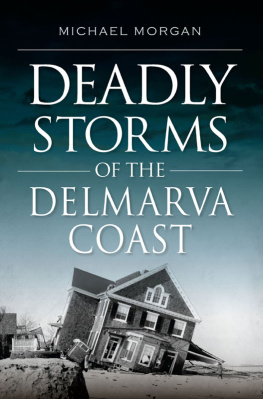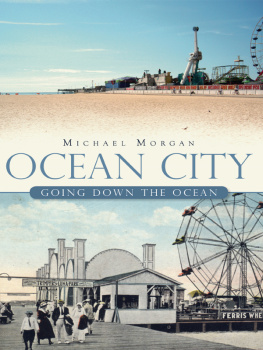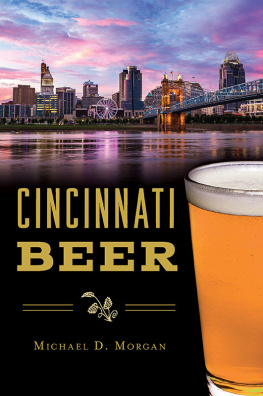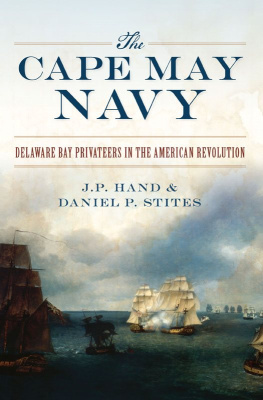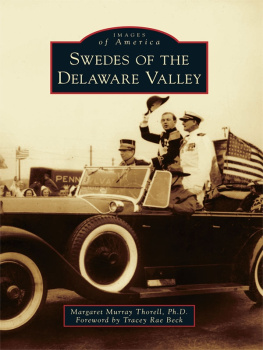Published by The History Press
Charleston, SC
www.historypress.net
Copyright 2016 by Michael Morgan
All rights reserved
First published 2016
e-book edition 2016
ISBN 978.1.62585.711.8
Library of Congress Control Number: 2016934222
print edition ISBN 978.1.46711.815.6
Notice: The information in this book is true and complete to the best of our knowledge. It is offered without guarantee on the part of the author or The History Press. The author and The History Press disclaim all liability in connection with the use of this book.
All rights reserved. No part of this book may be reproduced or transmitted in any form whatsoever without prior written permission from the publisher except in the case of brief quotations embodied in critical articles and reviews.
PREFACE
During the American Revolution and the War of 1812, the British Royal Navy harassed coastal communities and bombarded Lewes, placing the Delaware coast on the front lines. The same was true during World War II, when Nazi submarines prowled North American coastal waters sinking hundreds of ships and killing several thousand sailors and civilians. In Delaware, residents of Lewes, Rehoboth and Bethany Beach lived in fear that the enemy might shell them at any time. During the war, coastal residents endured dimouts, accepted rationing, participated in salvage and bond drives and prayed for the safe return of their husbands, fathers and brothers serving overseas. World War II was fought in many places around the globe. The 198 th Coast Artillery from southern Delaware spent much of its time during the war on Bora Bora, a tropical island in the South Pacific, where it built gun emplacements, barracks and other buildings near an undefended beach but did not encounter a single enemy soldier. But in Delaware, on the previously undefended sands of Cape Henlopen, gun emplacements, barracks and other buildings were constructed as Nazi submarines lurked in nearby waters. In 1942, scores of survivors of U-boat attacks landed at Lewes, where residents bound up their wounds and prepared for the next attack. The story of the individual servicemen from coastal towns who fought and died in battles around the globe is a subject for another book. This work tells the story of the Delaware coast during Americas greatest conflict, World War II, when these communities were truly on the front lines.
It would not have been possible to write this book without the assistance of the dedicated people who staff libraries, archives and historical societies. I would like to thank Shawn Heacock and Kaitlyn Dykes of Cape Henlopen State Park for answering my many questions. I would also like to thank Randy L. Goss of the Delaware Public Archives, Michael DiPaolo of the Lewes Historical Society, Nancy Alexander of the Rehoboth Historical Society, George Ward and Dr. Gary Wray of the Fort Miles Association and Roger Theil, who provided guidance on the Civil Air Patrol. Many individuals shared memories of the war; and I would like to particularly thank Joan Marshall Thompson, Grace Wolfe, Ron Dodd, Jack Warrington and Louise Smarrelli. Hazel D. Brittingham, the dean of Lewes historians, shared her wartime experiences and pointed me in the right direction to her extensive files at the Lewes Historical Society.
I would also like to thank my son, Tom, and his wife, Karla, for their support and technical assistance. Finally, I would like to thank my wife, Madelyn, for her constant editorial advice and support. She read every word in this book numerous times and spent countless hours correcting my spelling, punctuation and grammar. Without her help and support, this book would not have been possible.
Chapter 1
WAR CLOUDS ON THE COAST
TO GIVE BATTLE TO THE HUN
The United States had been fighting World War I (the War to End All Wars) for over a year on June 2, 1918, when sixteen men and two womenfatigued, frightened and half aliveshuffled their way along the pier to the firm ground of Cape Henlopen. These eighteen weary people were the survivors of an attack by a German submarine on a passenger ship off the American East Coast. Four years earlier, World War I had begun in Europe, and the United States was determined to remain neutral. The sinking of the Lusitania off the coast of Great Britain, German submarine warfare and other factors convinced America in 1917 to send its boys over there. In 1918, the Germans responded by sending its U-boats over here. The U-151, a 213-foot-long German submarine with a bulbous hull that was originally designed as a cargo-carrier, carried two deck guns, eighteen torpedoes, a supply of deadly mines (as big as an oversized beach ball packed with two hundred pounds of explosives) and enough fuel to easily make a transatlantic voyage. In the middle of April, the U-151 left the city of Kiel on Germanys Baltic coast, arriving along the mid-Atlantic coast one month later. After deploying mines near the mouth of the Chesapeake Bay and off Cape Henlopen, the U-151 went gunning for American ships.
On the evening of June 2, 1918, the German sub U-151 spotted the American passenger ship Carolina fifty miles east of Cape Henlopen. Coming to the surface, the sub fired five shots over the bow and stern of the Carolina, which slowed to a stop. As with the other vessels the U-boat had already sunk or damaged, the German orders were brief and precise: fill the lifeboats with everyone aboard and leave the ship in twenty minutes. When the last of the lifeboats, carrying over three hundred passengers and crew, was clear of the liner, the Germans fired seven shells from the submarines deck gun into the Carolina, which slowly began to sink, going down bow first. The German crew lined the deck of the sub and waved a fond farewell as the passenger ship slid beneath the waves. After the submarine sailed away, the survivors were adrift in open boats on the calm ocean more than fifty miles from the mid-Atlantic coast.
A captured German submarine with a round mine near the canning tower. Courtesy of the Library of Congress.
People in an open boat at sea faced two immediate dangers: hypothermia and capsizing. A fully clothed person pitched into the ocean by an overturned boat might drown, or if he was able to reboard the boat, the drenched person could be susceptible to hypothermiathe deadly loss of body heatwhich can be accelerated by moisture. In extreme cases, hypothermia can cause death in less than an hour. In June, however, the weather and water were warm, the ocean was calm and the lifeboats were in the busy coastal sea lanes. One boat from the Carolina capsized, and sixteen people were lost. Another boat reached shore at Atlantic City; most of the other survivors were picked up by the steamship Mexico. The Appleby, a British steamer, picked up the sixteen men and two women who landed in Lewes.
With news of the attacks off the coast spreading quickly, all outgoing vessels were stopped from leaving Delaware Bay, but two oil tankers, the Herbert L. Pratt and the Arco, were cruising northward between Rehoboth Beach and Lewes. The Pratt was bound for Philadelphia with a load of Mexican crude oil; the





